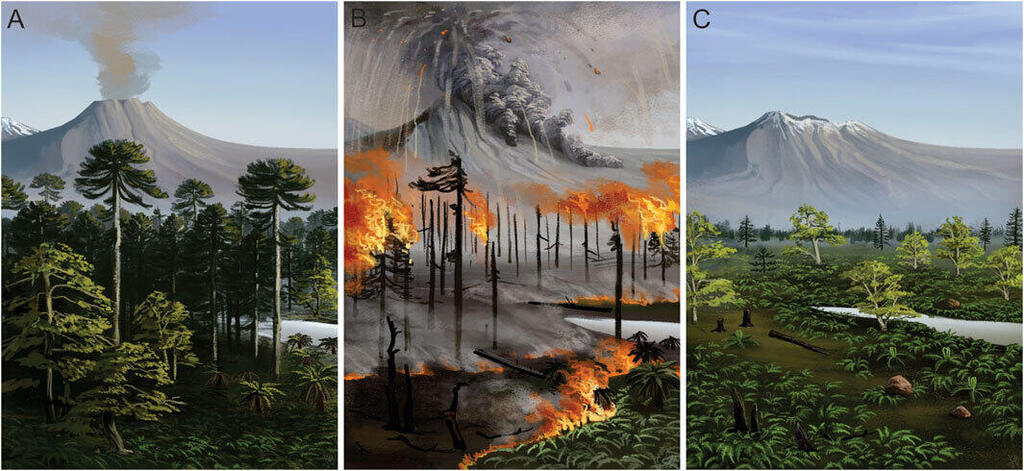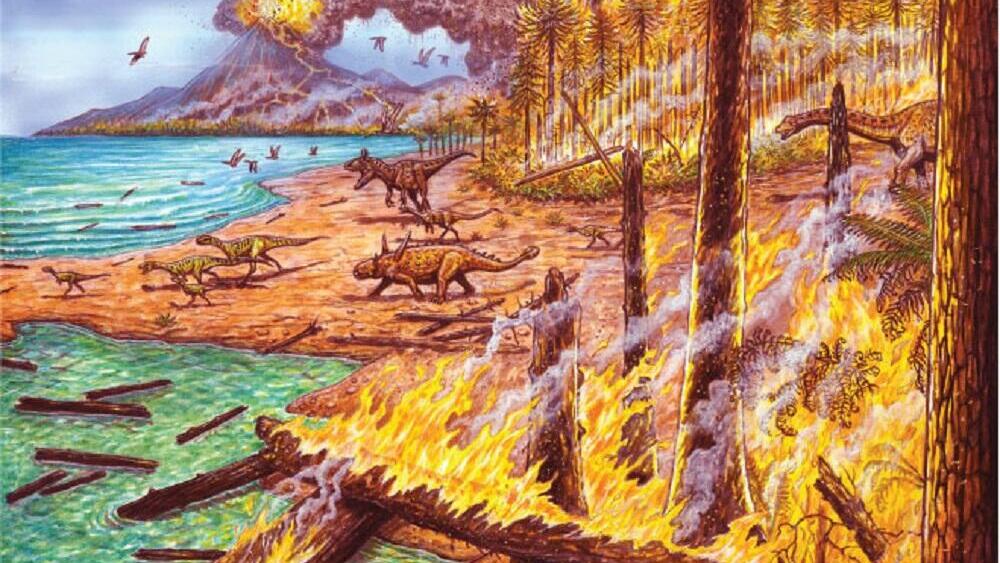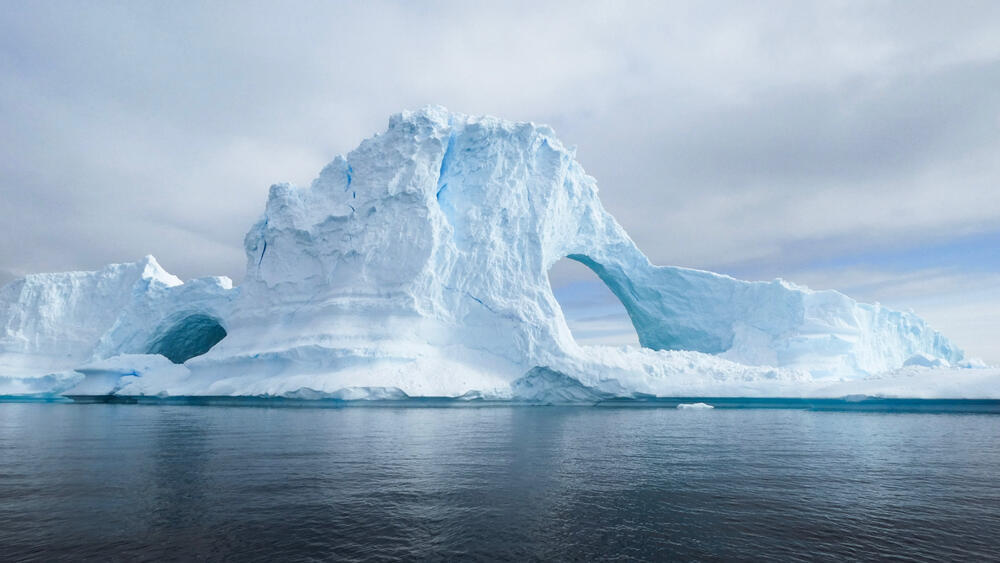Paleontologists from Brazil and Chile have uncovered an important discovery about the history of Antarctica. Today, it is a frozen continent covered in ice, in which the southernmost point of the Earth is located. But it turns out that way back when, the continent saw frequent forest fires that were directly linked to volcanic eruptions during the end of the Age of Dinosaurs, 75 million years ago.
Other stories:
The first evidence of the forest fires in Antarctica was already proven by the Brazilian paleobotanist in 2015, in a study published in the journal "Palaeogeography, Palaeoclimatology, Paleoecology."
3 View gallery


Paleoenvironmental reconstruction of austral areas under the influence of paleo-wildfires promoted by the Campanian active volcanism
(Illustration: Frontiers in Earth Science)
In the current study, whose findings were published in the journal "Frontiers in Earth Science," the researchers proved that Antarctica did indeed experience wildfires during the Cretaceous period, which lasted about 80 million years (from 145 million years ago to 66 million years ago), and that the occurrence of forest fires was frequent and caused by geologic activity during that period.
Today, Antarctica is the coldest place on Earth and is mostly covered in ice all throughout the year. There are no permanent residents in Antarctica due to its harsh weather conditions. However, many governments around the world operate research stations in Antarctica, some of which are occupied all year round and some only during the summer.
In addition to being a continent with the least suitable conditions for the development of terrestrial biodiversity today, due to its harsh abiotic factors (such as extreme cold and winds), Antarctica is also considered the continent that best preserves its environmental characteristics, as it is a true natural laboratory that encounters exceptional conditions for basic and applied scientific research, making it particularly interesting from a human perspective.
Although it is currently a large continental mass in the southern hemisphere, Antarctica has not always occupied this geographic location. Throughout geological periods, it has moved and changed due to constant tectonic movements, resulting in its placement in different regions around the globe throughout its paleogeographic history.
3 View gallery


An illustration depicting forest fires in Antarctica during the Cretaceous period
(Illustration: Maurilio Oliveira)
During this time, the environment underwent significant changes and was previously dominated by a vast array of species that populated large forests, leaving traces of their existence preserved in various geological contexts throughout Antarctica, especially from the Cretaceous period.
During this period, forest fires were a common shaping element in terrestrial environments. Besides being one of the significant factors in various environmental disruptions, the historic fires yielded fossilized coal, resulting from the carbonization of partially burnt plant matter preserved in geological records.
In fact, there are many different factors that affect the occurrence, frequency, and intensity of natural fires in ecological systems, such as seasonal climates, plant material availability, moisture, and ignition sources.
This research reveals that this area of Antarctica was also disrupted by forest fires during the Cretaceous period, much more frequently than previously thought, which partially or completely destroyed the vegetation.
The analysis of the plant fossils found in the Cretaceous deposits in Antarctica enables the identification of the components involved in setting fire to the vegetation, thereby allowing the reconstruction of a paleo-environmental scenario that is easy to understand.
"The powerful volcanoes that occurred during the Cretaceous period, which make up a large part of the rock formations in Antarctica, were also the driving force behind the forest fires that occurred at that time. However, contrary to what one might imagine, there was no molten lava flow from the volcanic mountains that engulfed the vegetation.
Instead, the vegetation was exposed to the ash clouds - pyroclastic clouds - originating from the volcanic mountains, which are preserved in geological records through very fine volcanic ash deposits, such as tuff (a type of porous, relatively soft rock formed from the compaction and cementation of volcanic ash, which spewed out from a volcanic crater during an eruption). These heated ash clouds reached the forests and caused natural vegetation fires," explained Dr. Manfroi, adding that it can be said that despite Antarctica being represented in modern times by its low temperatures that plunge below zero and the fact that 98% of its surface is covered with ice, "throughout its geological history, its surroundings were set ablaze, according to the evidenced by the findings from the analysis of the plants that were identified in its area. Forest fires were quite frequent during the Kerguelen period and had an impact on the evolution and biological diversity in this region of the globe."


